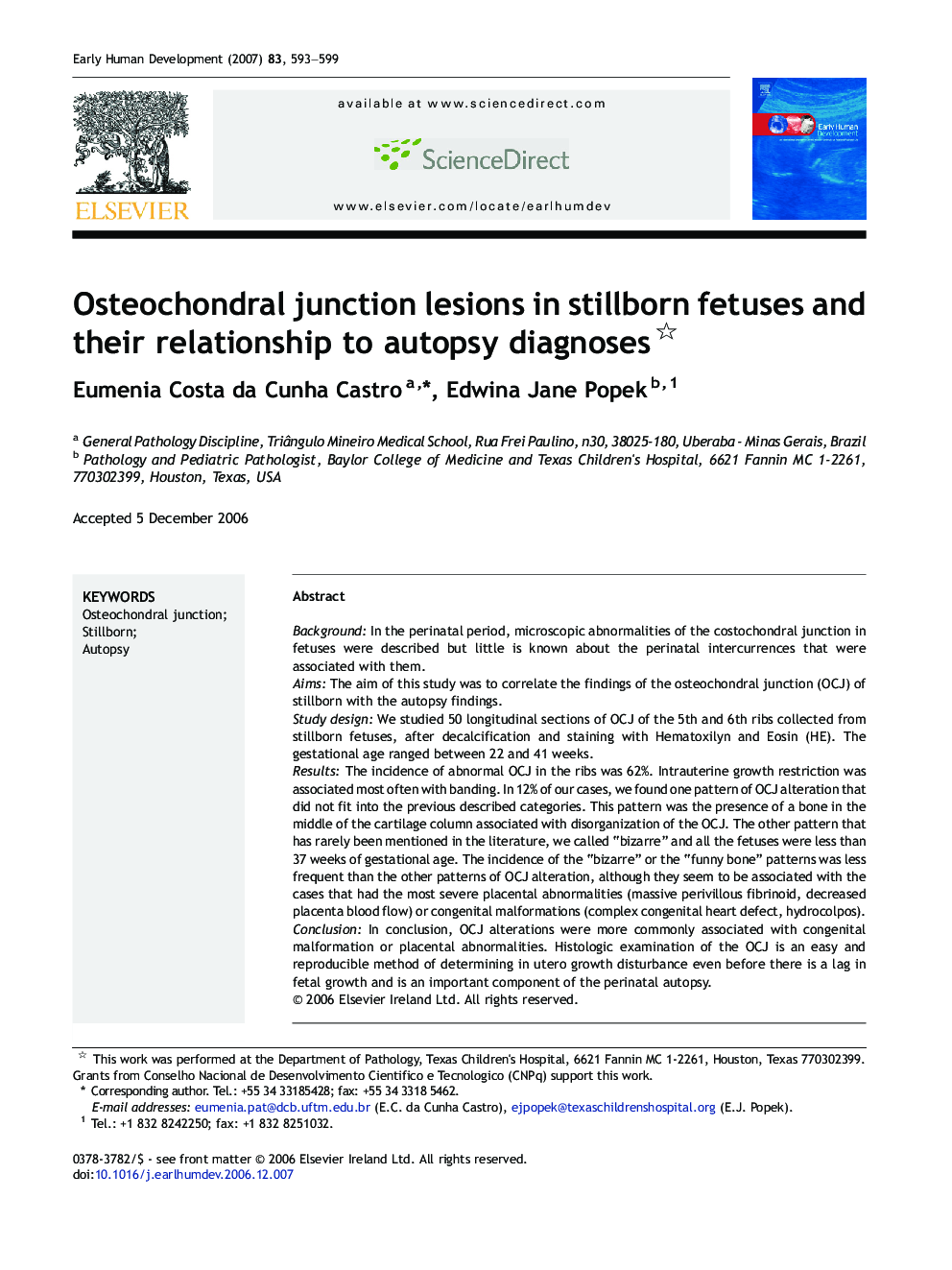| Article ID | Journal | Published Year | Pages | File Type |
|---|---|---|---|---|
| 3918601 | Early Human Development | 2007 | 7 Pages |
BackgroundIn the perinatal period, microscopic abnormalities of the costochondral junction in fetuses were described but little is known about the perinatal intercurrences that were associated with them.AimsThe aim of this study was to correlate the findings of the osteochondral junction (OCJ) of stillborn with the autopsy findings.Study designWe studied 50 longitudinal sections of OCJ of the 5th and 6th ribs collected from stillborn fetuses, after decalcification and staining with Hematoxilyn and Eosin (HE). The gestational age ranged between 22 and 41 weeks.ResultsThe incidence of abnormal OCJ in the ribs was 62%. Intrauterine growth restriction was associated most often with banding. In 12% of our cases, we found one pattern of OCJ alteration that did not fit into the previous described categories. This pattern was the presence of a bone in the middle of the cartilage column associated with disorganization of the OCJ. The other pattern that has rarely been mentioned in the literature, we called “bizarre” and all the fetuses were less than 37 weeks of gestational age. The incidence of the “bizarre” or the “funny bone” patterns was less frequent than the other patterns of OCJ alteration, although they seem to be associated with the cases that had the most severe placental abnormalities (massive perivillous fibrinoid, decreased placenta blood flow) or congenital malformations (complex congenital heart defect, hydrocolpos).ConclusionIn conclusion, OCJ alterations were more commonly associated with congenital malformation or placental abnormalities. Histologic examination of the OCJ is an easy and reproducible method of determining in utero growth disturbance even before there is a lag in fetal growth and is an important component of the perinatal autopsy.
